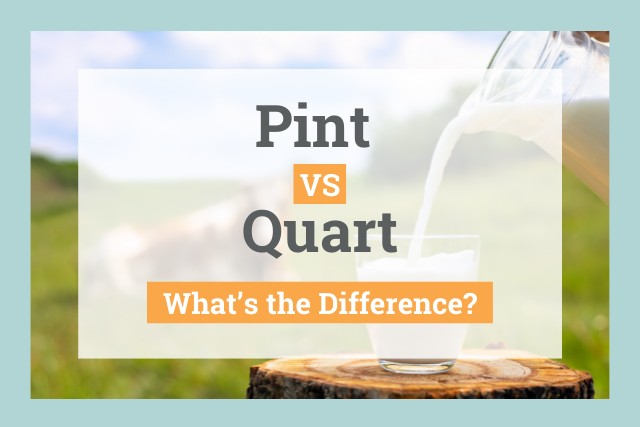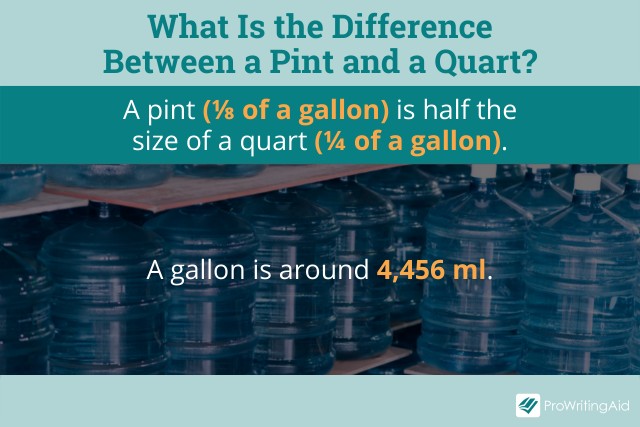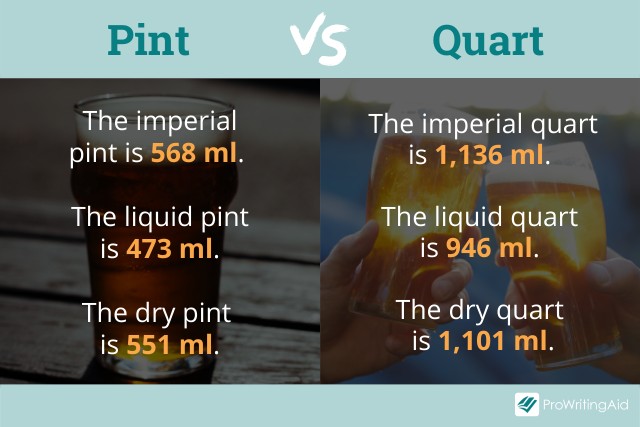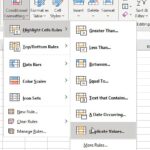Comparing liquid measurements can be tricky. How Big Is A Pint Compared To A Quart? A pint is half the size of a quart. To better understand these units, COMPARE.EDU.VN offers clear comparisons, helping you grasp the volume differences effortlessly. Explore further to clarify measurements and make informed decisions using our fluid conversion guides and comprehensive measurement analyses.
1. Understanding the Pint
A pint is a unit of volume equal to one-eighth of a gallon. It’s commonly used to measure beverages like beer, milk, and even dry goods like ice cream or blueberries. The abbreviation for pint is “pt” or “p.”
1.1. Pint Dimensions
The size of a pint varies depending on the region. It’s always one-eighth of a gallon, but the gallon’s size differs internationally.
- United Kingdom: The imperial pint is about 568 ml.
- United States: There are liquid and dry pints. The liquid pint, for liquids like milk, is about 473 ml. The dry pint, for dry goods like flour, is about 551 ml.
1.2. Common Uses of Pints
Pints are frequently used in everyday scenarios. Consider these examples:
- Ordering a pint of beer at a bar.
- Buying a pint of ice cream from the store.
- Measuring ingredients for a recipe.
2. Exploring the Quart
A quart is a unit of volume equal to a quarter of a gallon. The term “quart” is essentially a shortened form of “quarter.” You might see “qt” as the abbreviation.
2.1. Quart Dimensions
Similar to pints, the size of a quart can vary by location.
- United Kingdom: An imperial quart equals 1.136 liters.
- United States: There are liquid and dry quarts. A liquid quart is about 0.946 liters, while a dry quart is about 1.101 liters.
2.2. Common Uses of Quarts
Quarts are also common in various situations. Here are some examples:
- Buying a quart of milk.
- Purchasing a quart of motor oil.
- Measuring larger quantities of ingredients for cooking.
3. Pint vs. Quart: A Detailed Comparison
The key difference between a pint and a quart is size. A quart is twice the size of a pint. Therefore, one quart equals two pints, and one pint equals half a quart.
3.1. Size and Volume
To further illustrate, consider the measurements in both the UK and US systems:
Table 1: Pint vs. Quart Volume Comparison
| Measurement | UK (Imperial) | US (Liquid) | US (Dry) |
|---|---|---|---|
| Pint | 568 ml | 473 ml | 551 ml |
| Quart | 1.136 liters | 0.946 liters | 1.101 liters |
| Pints per Quart | 2 | 2 | 2 |



This table highlights that, regardless of the system, a quart is always twice the size of a pint.
3.2 Conversion Factors
Understanding the conversion factors between pints, quarts, and other units of volume can be very helpful.
- 1 quart = 2 pints
- 1 pint = 0.5 quart
- 1 gallon = 4 quarts
- 1 gallon = 8 pints
Knowing these conversions can simplify recipes, shopping, and other daily tasks.
3.3. Practical Examples
Let’s look at practical examples where knowing the difference between pints and quarts is useful:
- Cooking: A recipe calls for 1 quart of broth. You only have pints. You know you need 2 pints.
- Shopping: You need 3 quarts of paint. The store only sells pints. You calculate needing 6 pints.
- Beverages: You want to buy enough beer for a party. Knowing how many pints are in a quart helps you estimate how much to purchase.
4. Real-World Examples in Sentences
Here are some sentences showing how to use “pint” and “quart” correctly:
- “Can I have a pint of your finest ale, please?”
- “She devoured an entire pint of chocolate ice cream last night.”
- “The recipe requires five pints of chicken stock.”
- “Instead of a pint, I think I’ll get a quart of orange juice.”
- “This batch of jam needs three quarts, which is the same as six pints, of ripe peaches.”
- “I bought a quart of varnish for my woodworking project.”
- “The orphaned kittens need a quart of milk each day.”
5. The Science Behind Volume Measurement
Volume measurement is a fundamental aspect of both cooking and chemistry. It’s crucial for ensuring accuracy in recipes and experiments.
5.1. Historical Context
Historically, volume measurements evolved from practical needs. Pints and quarts have been used for centuries, adapting slightly over time and across different regions. The standardization of these measurements has helped facilitate trade and consistency.
5.2. Standard Measurement Systems
The two primary measurement systems are the metric system and the imperial system. The metric system, with units like liters and milliliters, is widely used globally. The imperial system, with units like pints and quarts, is primarily used in the United States and a few other countries.
5.3. Tools for Measurement
Various tools are used to measure volume accurately. These include:
- Measuring cups: Common for cooking, available in pint and quart sizes.
- Graduated cylinders: Used in scientific settings for precise liquid measurements.
- Beakers: Used for approximate measurements and mixing.
6. How Pints and Quarts Relate to Other Units
Understanding how pints and quarts fit into the larger system of volume measurement can be beneficial.
6.1. Pints and Quarts in Gallons
As mentioned earlier, pints and quarts are fractions of a gallon.
- 1 gallon = 4 quarts
- 1 gallon = 8 pints
This relationship is essential for scaling recipes or converting between different units.
6.2. Pints, Quarts, and Fluid Ounces
Fluid ounces are another common unit of volume.
- 1 pint = 16 fluid ounces
- 1 quart = 32 fluid ounces
Knowing these conversions can help when dealing with recipes that use fluid ounces as a measurement.
6.3. Pints, Quarts, and Liters
For those more familiar with the metric system:
- 1 liquid pint (US) ≈ 0.473 liters
- 1 liquid quart (US) ≈ 0.946 liters
- 1 imperial pint (UK) ≈ 0.568 liters
- 1 imperial quart (UK) ≈ 1.136 liters
These conversions are helpful for international recipes or scientific applications.
7. Common Mistakes to Avoid
When working with pints and quarts, it’s easy to make mistakes if you’re not careful. Here are some common errors to avoid:
7.1. Confusing Liquid and Dry Measurements
Remember that in the US system, liquid and dry pints and quarts are slightly different. Always clarify which type you’re using, especially when following recipes.
7.2. Ignoring Regional Differences
Be aware of the differences between US and UK measurements. A pint in the UK is not the same as a pint in the US.
7.3. Rushing Measurements
Take your time when measuring. Ensure you’re using the correct tools and reading the measurements accurately.
8. Practical Applications in Daily Life
Pints and quarts are not just theoretical measurements; they have numerous practical applications in everyday life.
8.1. Cooking and Baking
In the culinary world, accurate measurements are essential. Whether you’re making a simple soup or a complex cake, understanding pints and quarts helps ensure your recipes turn out as expected.
8.2. Gardening
When gardening, you often need to measure soil, fertilizers, or water. Knowing the volume helps you provide the right amount of nutrients for your plants.
8.3. Home Improvement
For DIY projects, like painting or cleaning, pints and quarts are useful for measuring paints, solvents, and cleaning solutions.
8.4. Health and Nutrition
Understanding portion sizes is crucial for maintaining a healthy diet. Knowing how many pints or quarts of water you need to drink daily can help you stay hydrated.
9. Advanced Measurement Techniques
For those who require even greater precision, there are advanced measurement techniques to consider.
9.1. Using Precision Tools
Investing in high-quality measuring cups and graduated cylinders can improve accuracy. Digital scales with volume measurement capabilities are also useful.
9.2. Temperature Considerations
Temperature can affect the volume of liquids. For scientific or industrial applications, it’s essential to measure volume at a consistent temperature.
9.3. Accounting for Viscosity
The viscosity of a liquid can also affect measurement accuracy. Highly viscous liquids may cling to measuring containers, leading to errors.
10. The Future of Volume Measurement
As technology advances, the way we measure volume continues to evolve.
10.1. Digital Measurement Tools
Digital measuring cups and scales are becoming increasingly popular. These tools offer precise measurements and often include features like unit conversion.
10.2. Smart Kitchen Appliances
Smart refrigerators and ovens can automatically measure ingredients, simplifying cooking and baking.
10.3. Standardizing Global Measurements
Efforts are ongoing to standardize measurement systems worldwide. A more unified system would reduce confusion and facilitate international trade.
11. Case Studies: Pints and Quarts in Action
Let’s examine a few case studies to illustrate the practical uses of pints and quarts in different industries.
11.1. Brewing Industry
Breweries rely heavily on accurate volume measurements. From mixing ingredients to packaging beer, pints and quarts are essential units for ensuring consistency and quality.
11.2. Dairy Industry
Dairy farms and processing plants use pints and quarts to measure milk, cream, and other dairy products. Accurate measurements are crucial for packaging and distribution.
11.3. Chemical Industry
In the chemical industry, precise volume measurements are critical for conducting experiments and producing chemicals. Pints and quarts are often used in smaller-scale laboratory settings.
12. Expert Opinions on Volume Measurement
To provide a well-rounded perspective, let’s consider some expert opinions on the importance of accurate volume measurement.
12.1. Chef’s Perspective
According to Chef Emily Thompson, “In cooking, precision is key. Understanding measurements like pints and quarts can be the difference between a culinary masterpiece and a disaster.”
12.2. Scientist’s Perspective
Dr. Robert Miller, a chemist, states, “Accurate volume measurement is fundamental to scientific research. Even small errors can lead to significant discrepancies in experimental results.”
12.3. Gardener’s Perspective
Gardener Sarah Green says, “Knowing how much water and fertilizer to use is essential for healthy plants. Pints and quarts help me provide the right amount of care.”
13. Addressing Common Misconceptions
There are several common misconceptions about pints and quarts that need to be addressed.
13.1. “A Pint Is Always a Pound”
This saying is not always true. While a pint of water weighs about a pound, the weight of other liquids can vary depending on their density.
13.2. “Metric Is Always Better”
While the metric system has many advantages, the imperial system is still widely used in certain regions and industries. Both systems have their merits and drawbacks.
13.3. “Volume Doesn’t Matter”
Accurate volume measurement is crucial in many areas, from cooking to science. Ignoring volume can lead to errors and inconsistencies.
14. Resources for Further Learning
If you want to deepen your understanding of volume measurement, there are many resources available.
14.1. Online Conversion Tools
Websites like Google Unit Converter and ConvertUnits.com offer easy-to-use tools for converting between different units of volume.
14.2. Educational Websites
Websites like Khan Academy and Coursera offer courses on measurement and science, covering volume and other related topics.
14.3. Books on Measurement
Books like “Units of Measurement” by Stephen Dresner provide a comprehensive overview of measurement systems and their history.
15. The Role of COMPARE.EDU.VN in Simplifying Comparisons
COMPARE.EDU.VN simplifies complex comparisons by providing detailed, objective analyses. Whether you’re comparing different products, services, or ideas, our platform offers the information you need to make informed decisions. We focus on clarity, accuracy, and comprehensiveness, ensuring you have all the facts at your fingertips.
15.1. Overcoming Information Overload
One of the biggest challenges in decision-making is the sheer amount of information available. COMPARE.EDU.VN filters out the noise and presents the most relevant data in an easy-to-understand format.
15.2. Providing Objective Comparisons
Our comparisons are unbiased and based on thorough research. We highlight the pros and cons of each option, helping you weigh the benefits and drawbacks.
15.3. Tailoring to User Needs
We understand that everyone’s needs are different. That’s why we offer customizable comparisons, allowing you to focus on the factors that matter most to you.
16. Conclusion: Mastering Pints and Quarts
Understanding the difference between a pint and a quart is more than just knowing basic measurements. It’s about appreciating the role of accurate volume measurement in various aspects of life, from cooking to science. By mastering these units, you can improve your precision, avoid common mistakes, and make informed decisions.
Whether you’re a seasoned chef, a budding scientist, or simply someone who wants to be more accurate in the kitchen, a solid understanding of pints and quarts is essential.
So, next time you’re faced with a recipe, a gardening task, or a DIY project, remember the principles outlined in this guide. You’ll be well-equipped to measure with confidence and achieve the best possible results.
17. FAQ: Frequently Asked Questions About Pints and Quarts
Q1: How many fluid ounces are in a pint?
There are 16 fluid ounces in a pint.
Q2: How many fluid ounces are in a quart?
There are 32 fluid ounces in a quart.
Q3: Is a US pint the same as a UK pint?
No, a US pint is smaller than a UK pint. A US pint is about 473 ml, while a UK pint is about 568 ml.
Q4: What is the difference between a liquid quart and a dry quart?
A liquid quart is used for measuring liquids, while a dry quart is used for measuring dry goods. They have slightly different volumes in the US system.
Q5: How many quarts are in a gallon?
There are 4 quarts in a gallon.
Q6: How many pints are in a gallon?
There are 8 pints in a gallon.
Q7: Why is it important to measure volume accurately?
Accurate volume measurement is essential for cooking, scientific experiments, and many other applications where precision is required.
Q8: What tools can I use to measure volume accurately?
You can use measuring cups, graduated cylinders, beakers, and digital scales with volume measurement capabilities.
Q9: Are volume measurements affected by temperature?
Yes, temperature can affect the volume of liquids. It’s essential to measure volume at a consistent temperature for accurate results.
Q10: Where can I find more information about volume measurement?
You can find more information on online conversion tools, educational websites, and books on measurement.
18. Call to Action
Ready to make smarter, more informed decisions? Visit COMPARE.EDU.VN today to explore detailed comparisons across a wide range of topics. Whether you’re comparing the latest gadgets, evaluating different investment options, or deciding which educational path to pursue, COMPARE.EDU.VN provides the objective, comprehensive information you need.
Don’t let the complexity of choices overwhelm you. Let COMPARE.EDU.VN simplify the process and empower you to make the best decisions for your needs. Visit us now and start comparing!
Contact Information:
Address: 333 Comparison Plaza, Choice City, CA 90210, United States
WhatsApp: +1 (626) 555-9090
Website: compare.edu.vn
